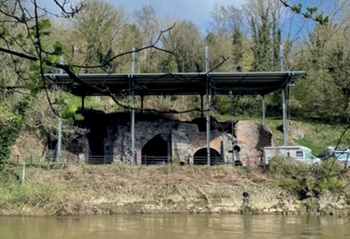Investigating failures in building services
Contents |
[edit] Introduction
A study from the UCL(1) revealed that building failures may cost the UK construction industry £1bn to £2bn every year. This was a conservative estimate made in 2016, based on 1 to 2% of the total value of construction.
As of March 2020, the Office for National Statistics has estimated the total value of all UK construction works to be worth £12.7bn, 68% of which is for new buildings or the repair and maintenance of existing buildings. This would give an estimated cost of failure between £85m and £170m, of which building services would account for a high proportion.
[edit] Types of failures in building services
Diagram courtesy of BSRIA; not for reuse.
The typical pattern of failure arising against time is shown by the well-known bathtub curve, which is divided into three segments or periods.
The first period is usually detected during the defects liability period after a project is handed over.
The second period would happen during the operation of a system, and failures may occur due to inappropriate operating conditions or maintenance regimes.
The third period is when the system is reaching the end of its life. Failure could be imminent and there should be little or no surprise in this happening.
[edit] Importance of investigating these failures
There are various reasons why every unexpected failure should be investigated. Below are some of the key ones:
- Insurance purposes. Insurers may require an independent evaluation of the failure and investigation of its possible cause to identify possible fraudulent or malicious intentions.
- Cost savings. Too often, failed components are replaced without investigating the root cause. Without understanding the origin of a failure, it is not possible to prevent its re-occurrence. Repetitive failure and replacement of components could add significantly to the operating cost for a building or estate.
- Health and safety. In May 2009, a lift at London’s Tower Bridge tourist attraction suffered a vital mechanism failure that sent it falling with nine people in it, four of whom suffered bone fractures. The malfunction was caused by the failure of a counterweight mechanism. The accident investigation by the HSE revealed that there had been several previous component failures with the counterweight mechanism, and the components had been replaced without proper review, and with no investigation into why they were failing so early. Tower Bridge was ordered to pay a total cost of £100k, and the HSE concluded that, had there been a proper review into the counterweight mechanisms, the catastrophic failure of the lift could have been avoided.
Read more about BSRIA’s Failure Investigation service here.
(1) Razak, D S A, Mills, G and Roberts, A (2016) External Failure Cost in Construction Supply Chains. In: P W Chan and C J Neilson (Eds.)
This article was originally published as The importance of investigating failures in building services on the BSRIA website on 20 May 2020. It was written by Martin Ronceray, BSRIA Engineering Investigation Lead.
--BSRIA
[edit] Related articles on Designing Buildings Wiki
- BSRIA articles on Designing Buildings Wiki.
- Cracking and building movement.
- Defects.
- Failure.
- Failure modes and effect analysis (FMEA).
- Inspection and test plan.
- Latent defects.
- Structural failures.
- Why should quality be important to the construction industry/
Featured articles and news
Art of Building CIOB photographic competition public vote
The last week to vote for a winner until 10 January 2025.
The future of the Grenfell Tower site
Principles, promises, recommendations and a decision expected in February 2025.
20 years of the Chartered Environmentalist
If not now, when?
Journeys in Industrious England
Thomas Baskerville’s expeditions in the 1600s.
Top 25 Building Safety Wiki articles of 2024
Take a look what most people have been reading about.
Life and death at Highgate Cemetery
Balancing burials and tourism.
The 25 most read articles on DB for 2024
Design portion to procurement route and all between.
The act of preservation may sometimes be futile.
Twas the site before Christmas...
A rhyme for the industry and a thankyou to our supporters.
Plumbing and heating systems in schools
New apprentice pay rates coming into effect in the new year
Addressing the impact of recent national minimum wage changes.
EBSSA support for the new industry competence structure
The Engineering and Building Services Skills Authority, in working group 2.
Notes from BSRIA Sustainable Futures briefing
From carbon down to the all important customer: Redefining Retrofit for Net Zero Living.
Principal Designer: A New Opportunity for Architects
ACA launches a Principal Designer Register for architects.























